Features
Poor-quality and counterfeit medicines and unnecessary drugs
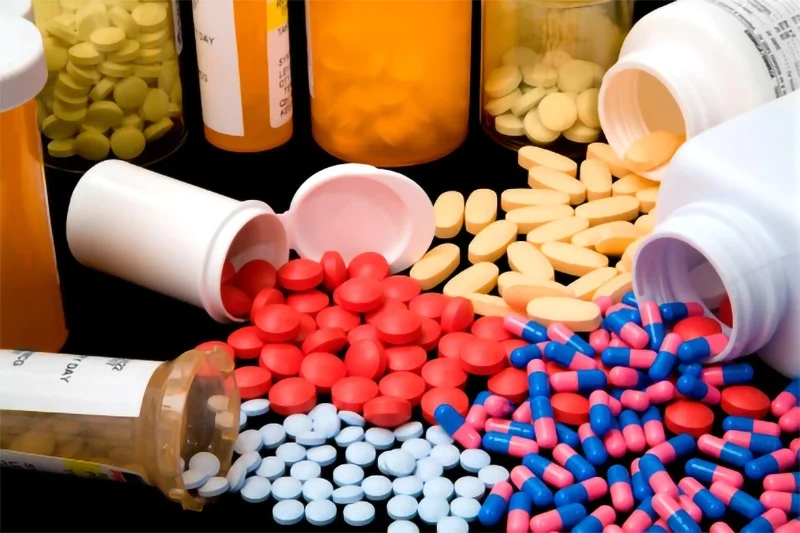
by Saman Gunatilake
Emeritus Professor of Medicine and Neurologist
University of Sri Jayewardenepura
Key facts
* Substandard and counterfeit medical products affect people all around the world.
* At least 1 in 10 medicines in low- and middle-income countries are substandard or falsified.
* Countries spend an estimated US$ 30.5 billion per year on substandard and falsified medical products.
* Substandard and falsified medical products are often sold online or in informal markets.
The circulation of substandard medicines in the developing world is a serious clinical and public health concern. Studies have revealed that in low-and-middle income countries, more than 13 percent of the essential medicines that are considered as priority for basic healthcare are of poor quality and falsified. In Asia and Africa, the prevalence of poor-quality medicines was ranging from 11 to 48 percent. In low- and middle-income countries, 19 percent of antimalarial drugs and 12 percent of antibiotics are substandard or counterfeit. Sri Lanka is also not immune from these problems. A research paper published in the journal BMC Health Services Research in 2023 titled “Quality of medicines in Sri Lanka: a retrospective review of safety alerts” revealed that over a period of three years, in 2018 to 2021, contamination was the most frequent cause of defective medicines, while stability defects, packaging and labelling defects and active ingredient defects were other causes. In addition, the findings showed that some manufacturers were accountable for repetitive withholdings and recalls of medicines from use, which reflects the ignorance of quality control measures and weak regulatory inspections, violating Good Manufacturing Practice (GMP). These measures have been enhanced and enforced strictly following changes in regulatory bodies, such as the National Medicine Regulatory Authority (NMRA), and it is likely that the situation is much better today. Recently, a newspaper reported that 13 batches of different types of medicines have been withheld, or recalled, due to poor quality.
There are two main categories of poor-quality medicines: Substandard and counterfeit. WHO defines ‘substandard medicines’ as authorized medical products that fail to meet either their quality standards or their specifications, or both, and ‘falsified or counterfeit medicines’ as “medicines that are deliberately and fraudulently mislabelled with respect to identity composition or source”. Counterfeits may include products with correct or incorrect ingredients, without active ingredients, with insufficient active ingredients, or with fake packaging’’. For example, some time back one-third to one-half of the vital anti-malarial agent artesunate bought in mainland South-East Asia was counterfeit, containing no or sub-therapeutic active ingredient. We all are familiar with the fake immunoglobulin scam which happened in our country. These products are often created and distributed with the intent to deceive consumers for financial gain.
Substandard and counterfeit medical products pose significant threats to public health globally. They can be ineffective at treating the illness, as they may contain incorrect ingredients or incorrect dosages. They can even be directly harmful to patients if they contain contaminants or toxic substances. In Sri Lanka, a few years ago, the contamination of eye drops with fungi was reported causing blindness, and contaminated injections causing severe infections such as meningitis. Both substandard and counterfeit medical products put patients’ health at risk, undermine the effectiveness of health systems, and erode trust in health and care providers. Most of the patients we see are aware of the problems we have had with poor quality drugs and some insist that the doctors dispense good quality medicines and some go to the extent of even bringing the medicines that they have bought or got from hospitals to be double checked.
There is a substantial economic burden, too, with the country’s finances wasted due to ineffective treatments, increased healthcare costs and loss of productivity. For patients, the consequences are serious: ineffective or harmful products can exacerbate illnesses, lead to complications and prolonged suffering and even death. Patients may unknowingly consume medications that contain toxic substances or incorrect dosages, resulting in poisoning, treatment failure, and exacerbation of diseases. Trust in healthcare providers and systems erodes, leaving communities vulnerable and fearful. With the global spread of this issue, no region is spared, with both developed and developing countries having to grapple with this man-made danger to our health.
Sophisticated networks manufacture these products, exploiting the demand for affordable medical treatments. The increase in online sales, through unauthorized sites, has further worsened the issue, allowing counterfeit products to reach consumers more easily. To tackle this problem, robust legal frameworks, regional and international cooperation, heightened public awareness and stronger enforcement measures are required. These steps are crucial to safeguarding the integrity of health systems and ensuring the availability of safe and effective medical products.
In this background, everyone is at risk of encountering substandard and falsified medical products. The following are more at risk – vulnerable populations, countries lacking social protection and with weaker health systems, individuals buying medical products from unauthorized sources (including online), countries with a poor supply chain and countries with an increased demand of specific and urgent supply of medical products requiring bypass of standard regulatory measures.
Tackling substandard and counterfeit medical products is challenging due to limited resources and infrastructure in many regions, especially in low- and middle-income countries. Counterfeiters are using sophisticated methods that make detection difficult. The rise of online purchases and informal markets makes it hard to monitor and control the distribution of these products. Additionally, the vast number of medical products in circulation, worldwide, makes comprehensive regulation and monitoring a significant challenge.
Combating the problem
Strengthening medicine regulatory authorities and in our country the NMRA, improving quality of production, and facilitating the availability of relatively inexpensive, good quality medicines are key to combating the problem. Sustained political will and financial support for coordinated action from health officials, police, custom officials and MRAs is vital. Poorer countries will find it difficult to implement quality assurance measures. WHO has estimated that around 30% of countries have no good drug regulation capacity that functions effectively. The lack of financial and human resources, trained personnel in MRAs make investigation and control of poor-quality drugs impossible. Increased provision of essential drugs free or at subsidized costs for major diseases would undercut the counterfeiters.
Preventing, detecting and responding to substandard and falsified medical products require robust regulatory systems which enforce the highest possible quality standards for medical products. Measures are required to prevent the manufacture, sale and consumption of substandard and falsified medical products by implementing systems to detect any substandard and falsified medical products already in the supply chain. Responding quickly and proportionately to any incident detected, in ways that safeguard patients, and the supply chain, are important, taking appropriate action, whilst not causing unnecessary shortages. Governments must ensure that regulations and legal frameworks keep pace with technological developments and the regulatory standards are upheld and enforced in a consistent and transparent manner.
Public awareness campaigns are crucial to educate people about the risks of buying medical products from unauthorized sources. It is crucial to support local healthcare providers and ensure they have access to safe, affordable medical products. This involves strengthening healthcare infrastructure, providing training and resources and implementing policies that guarantee the availability of genuine, cost-effective medicines for all communities.
WHO response
WHO addresses the issue of substandard and falsified medical products through coordinated political and technical responses. The Member State mechanism was established to facilitate global collaboration among WHO Member States. It aims to promote and reinforce national and international efforts to prevent, detect and respond to substandard and falsified medical products. This mechanism allows member states to share information, experiences and best practices, ensuring a unified and effective global response. It also supports the development of regulatory frameworks, capacity building and the promotion of legal measures to combat these threats to public health.
The WHO Global Surveillance and Monitoring System (GSMS) is a comprehensive initiative launched in 2013 to enhance the detection, reporting and response to substandard and falsified medical products. By providing national regulatory authorities with a robust information portal, the GSMS facilitates the sharing of data on suspect products, enabling timely alerts and coordinated actions across borders. This system is vital to improve the accuracy and speed of identifying these products, supporting evidence-based policymaking, and strengthening regulatory capacities globally. Its collaborative approach ensures that health systems are better equipped to protect public health and maintain the integrity of medical supplies.
Together, the Member State mechanism and GSMS provide a comprehensive framework for addressing the complex challenge of substandard and falsified medical products, enhancing global public health safety.
Unnecessary drugs
Recently our Minister of Health has stated that there are many unnecessary drugs in the market and that steps will be taken to curb this menace. This is very true and as prescribing doctors we see many unnecessary drugs in the market. What are unnecessary drugs? There are two main categories 1) An approved drug being used as treatment when it is really not necessary for the patient 2) Products marketed as medicines where their clinical value is not proven.
The Centers for Medicare and Medicaid (CMS) in USA define an Unnecessary Drug as any drug used in excessive dosage (including duplicate drug therapy); for excessive duration; without adequate monitoring; without adequate indications for its use; in the presence of adverse consequences which indicate the dose should be reduced or discontinued. The term Unnecessary Drug is often misunderstood, incorrectly used and poorly applied. A recent survey published by the chief pharmaceutical officer for England, concludes that up to 110 million medicines handed to patients each year may be unnecessary and even potentially harmful. In England, 15 percent of people now take five or more medicines a day, while seven percent are on eight drugs or more. Sometimes two or three painkillers are given when one would suffice. This applies to antibiotics, too, and haphazard use can lead to unwanted drug interactions, side effects and drug resistance. Vitamin supplements also are widely used, a single patient being on many vitamins when there is no real indication. Some vitamins in excess can be harmful and as routine supplements vitamins really serve no purpose.
Factors contributing to the misuse of medication include health system and regulatory failures, poor prescribing practices on the part of physicians, ease of access to medications from pharmacists without requiring a prescription as well as a lack of education among patients about their medications. Increasingly, healthcare providers around the world are seeing “deprescribing” as a solution. This process, led by pharmacists and doctors, involves systematically discontinuing medicines that are inappropriate, duplicative or unnecessary.
Use of drugs without proven clinical benefit
These are drugs available in the market that have not been subjected to proper clinical evaluation. Accepted practice is for new drugs to undergo various stages of evaluation before use in humans. Once the laboratory, animal and human safety studies are done, a new drug is subjected to a clinical trial. If the product is proven to be of benefit in a clinical trial, then the regulatory body of the country (The United States Food and Drug Administration FDA in the USA, The Medicines and Healthcare products Regulatory Agency (MHRA) in the UK, NMRA in Sri Lanka). However, in our country what are assumed to be herbal products and Ayurveda products don’t need to go through these stringent checks. As a result, they are in the market and advertised in newspapers and electronic media, these products, misleading the public. It is also of concern that even universities of ours are marketing drugs of no proven clinical value using this loophole in the regulatory process.
Substandard medicines are a problem in Sri Lanka similar to that of other low- and middle-income countries. The challenges posed by poor quality medicines are increasingly becoming global, requiring international cooperation at all levels. To ensure quality medicines reach the market and the public, strong country plans, regulators with power to act, technical assistance to genuine manufacturers, awareness among healthcare workers and the public are important areas that must be strengthened. Governments in rich countries should not tolerate the export of substandard pharmaceutical products to poor countries, while developing country governments should improve their ability to detect substandard medicines.
Spread of counterfeit drugs is a modern-day menace which is seen internationally, especially so in developing countries. The problem assumes added significance in view of rapid globalization. The market of spurious and counterfeit drugs is a well-organized crime. Poverty, high cost of medicines, lack of an official supply chain, legislative weaknesses, easy accessibility to printing technology, ineffective law enforcement machinery, and light penalties provide the counterfeiters with an enormous economic incentive without much risk. The consequences of the use of such medicines may vary from treatment failure, serious adverse events and even death. Proper drug quality monitoring, enforcement of laws and legislation, an effective and efficient regulatory environment, and awareness and vigilance, on part of all stakeholders are required to tackle this problem.
Features
The US-China rivalry and challenges facing the South
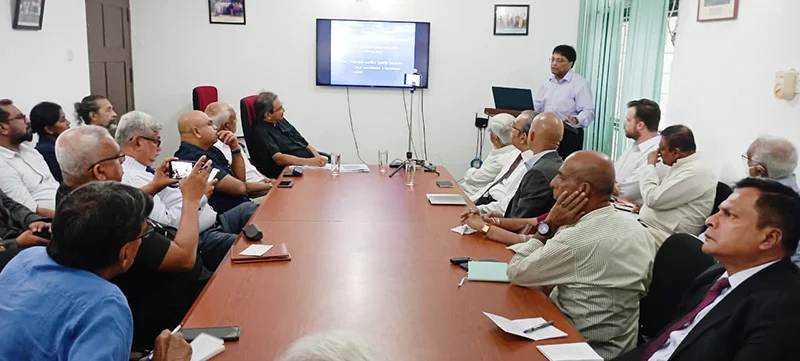
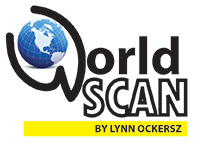 The US-China rivalry could be said to make-up the ‘stuff and substance’ of world politics today but rarely does the international politics watcher and student of the global South in particular get the opportunity of having a balanced and comprehensive evaluation of this crucial relationship. But such a balanced assessment is vitally instrumental in making sense of current world power relations.
The US-China rivalry could be said to make-up the ‘stuff and substance’ of world politics today but rarely does the international politics watcher and student of the global South in particular get the opportunity of having a balanced and comprehensive evaluation of this crucial relationship. But such a balanced assessment is vitally instrumental in making sense of current world power relations.
Thanks to the Regional Centre for Strategic Studies (RCSS), Colombo the above window of opportunity was opened on December 8th for those sections of the public zealously pursuing an understanding of current issues in global politics. The knowledge came via a forum that was conducted at the RCSS titled, ‘The US-China Rivalry and Implications for the Indo-Pacific’, where Professor Neil DeVotta of the Wake Forest University of North Carolina in the US, featured as the speaker.
A widely representative audience was present at the forum, including senior public servants, the diplomatic corps, academics, heads of civil society organizations, senior armed forces personnel and the media. The event was ably managed by the Executive Director of the RCSS, retired ambassador Ravinatha Aryasinha. Following the main presentation a lively Q&A session followed, where many a point of interest was aired and discussed.
While there is no doubt that China is fast catching up with the US with regard to particularly military, economic, scientific and technological capability, Prof. DeVotta helped to balance this standard projection of ‘China’s steady rise’ by pointing to some vital facts about China, the omission of which would amount to the observer having a somewhat uninformed perception of global political realities.
The following are some of the facts about contemporary China that were highlighted by Prof. DeVotta:
* Money is steadily moving out of China and the latter’ s economy is slowing down. In fact the country is in a ‘ Middle Income Trap’. That is, it has reached middle income status but has failed to move to upper income status since then.
* People in marked numbers are moving out of China. It is perhaps little known that some Chinese are seeking to enter the US with a view to living there. The fact is that China’s population too is on the decline.
* Although the private sector is operative in China, there has been an increase in Parastatals; that is, commercial organizations run by the state are also very much in the fore. In fact private enterprises have begun to have ruling Communist Party cells in them.
* China is at its ‘peak power’ but this fact may compel it to act ‘aggressively’ in the international sphere. For instance, it may be compelled to invade Taiwan.
* A Hard Authoritarianism could be said to characterize central power in China today, whereas the expectation in some quarters is that it would shift to a Soft Authoritarian system, as is the case in Singapore.
* China’s influence in the West is greater than it has ever been.
The speaker was equally revelatory about the US today. Just a few of these observations are:
* The US is in a ‘Unipolar Moment’. That is, it is the world’s prime power. Such positions are usually not longstanding but in the case of the US this position has been enjoyed by it for quite a while.
* China is seen by the US as a ‘Revisionist Power’ as opposed to being a ‘Status Quo Power.’ That is China is for changing the world system slowly.
* The US in its latest national security strategy is paying little attention to Soft Power as opposed to Hard Power.
* In terms of this strategy the US would not allow any single country to dominate the Asia-Pacific region.
* The overall tone of this strategy is that the US should step back and allow regional powers to play a greater role in international politics.
* The strategy also holds that the US must improve economic ties with India, but there is very little mention of China in the plan.
Given these observations on the current international situation, a matter of the foremost importance for the economically weakest countries of the South is to figure out how best they could survive materially within it. Today there is no cohesive and vibrant collective organization that could work towards the best interests of the developing world and Dr. DeVotta was more or less correct when he said that the Non-alignment Movement (NAM) has declined.
However, this columnist is of the view that rather being a spent force, NAM was allowed to die out by the South. NAM as an idea could never become extinct as long as economic and material inequalities between North and South exist. Needless to say, this situation is remaining unchanged since the eighties when NAM allowed itself to be a non-entity so to speak in world affairs.
The majority of Southern countries did not do themselves any good by uncritically embracing the ‘market economy’ as a panacea for their ills. As has been proved, this growth paradigm only aggravated the South’s development ills, except for a few states within its fold.
Considering that the US would be preferring regional powers to play a more prominent role in the international economy and given the US’ preference to be a close ally of India, the weakest of the South need to look into the possibility of tying up closely with India and giving the latter a substantive role in advocating the South’s best interests in the councils of the world.
To enable this to happen the South needs to ‘get organized’ once again. The main differences between the past and the present with regard to Southern affairs is that in the past the South had outstanding leaders, such as Jawaharlal Nehru of India, who could doughtily stand up for it. As far as this columnist could ascertain, it is the lack of exceptional leaders that in the main led to the decline of NAM and other South-centred organizations.
Accordingly, an urgent task for the South is to enable the coming into being of exceptional leaders who could work untiringly towards the realization of its just needs, such as economic equity. Meanwhile, Southern countries would do well to, indeed, follow the principles of NAM and relate cordially with all the major powers so as to realizing their best interests.
Features
Sri Lanka and Global Climate Emergency: Lessons of Cyclone Ditwah
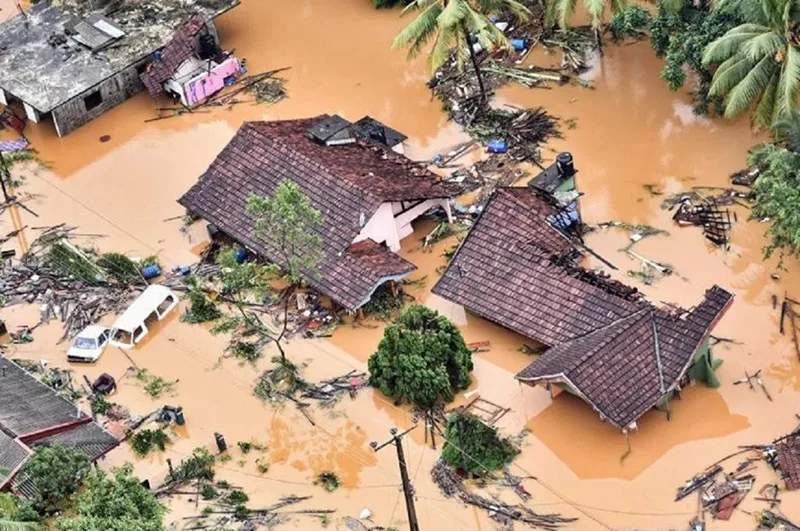
Tropical Cyclone Ditwah, which made landfall in Sri Lanka on 28 November 2025, is considered the country’s worst natural disaster since the deadly 2004 tsunami. It intensified the northeast monsoon, bringing torrential rainfall, massive flooding, and 215 severe landslides across seven districts. The cyclone left a trail of destruction, killing nearly 500 people, displacing over a million, destroying homes, roads, and railway lines, and disabling critical infrastructure including 4,000 transmission towers. Total economic losses are estimated at USD 6–7 billion—exceeding the country’s foreign reserves.
The Sri Lankan Armed Forces have led the relief efforts, aided by international partners including India and Pakistan. A Sri Lanka Air Force helicopter crashed in Wennappuwa, killing the pilot and injuring four others, while five Sri Lanka Navy personnel died in Chundikkulam in the north while widening waterways to mitigate flooding. The bravery and sacrifice of the Sri Lankan Armed Forces during this disaster—as in past disasters—continue to be held in high esteem by grateful Sri Lankans.
The Sri Lankan government, however, is facing intense criticism for its handling of Cyclone Ditwah, including failure to heed early warnings available since November 12, a slow and poorly coordinated response, and inadequate communication with the public. Systemic issues—underinvestment in disaster management, failure to activate protocols, bureaucratic neglect, and a lack of coordination among state institutions—are also blamed for avoidable deaths and destruction.
The causes of climate disasters such as Cyclone Ditwah go far beyond disaster preparedness. Faulty policymaking, mismanagement, and decades of unregulated economic development have eroded the island’s natural defenses. As climate scientist Dr. Thasun Amarasinghe notes:
“Sri Lankan wetlands—the nation’s most effective natural flood-control mechanism—have been bulldosed, filled, encroached upon, and sold. Many of these developments were approved despite warnings from environmental scientists, hydrologists, and even state institutions.”
Sri Lanka’s current vulnerabilities also stem from historical deforestation and plantation agriculture associated with colonial-era export development. Forest cover declined from 82% in 1881 to 70% in 1900, and to 54–50% by 1948, when British rule ended. It fell further to 44% in 1954 and to 16.5% by 2019.
Deforestation contributes an estimated 10–12% of global greenhouse gas emissions. Beyond removing a vital carbon sink, it damages water resources, increases runoff and erosion, and heightens flood and landslide risk. Soil-depleting monocrop agriculture further undermines traditional multi-crop systems that regenerate soil fertility, organic matter, and biodiversity.
In Sri Lanka’s Central Highlands, which were battered by Cyclone Ditwah, deforestation and unregulated construction had destabilised mountain slopes. Although high-risk zones prone to floods and landslides had long been identified, residents were not relocated, and construction and urbanisation continued unchecked.
Sri Lanka was the first country in Asia to adopt neoliberal economic policies. With the “Open Economy” reforms of 1977, a capitalist ideology equating human well-being with quantitative growth and material consumption became widespread. Development efforts were rushed, poorly supervised, and frequently approved without proper environmental assessment.
Privatisation and corporate deregulation weakened state oversight. The recent economic crisis and shrinking budgets further eroded environmental and social protections, including the maintenance of drainage networks, reservoirs, and early-warning systems. These forces have converged to make Sri Lanka a victim of a dual climate threat: gradual environmental collapse and sudden-onset disasters.
Sri Lanka: A Climate Victim
Sri Lanka’s carbon emissions remain relatively small but are rising. The impact of climate change on the island, however, is immense. Annual mean air temperature has increased significantly in recent decades (by 0.016 °C annually between 1961 and 1990). Sea-level rise has caused severe coastal erosion—0.30–0.35 meters per year—affecting nearly 55% of the shoreline. The 2004 tsunami demonstrated the extreme vulnerability of low-lying coastal plains to rising seas.
The Cyclone Ditwah catastrophe was neither wholly new nor surprising. In 2015, the Geneva-based Internal Displacement Monitoring Centre (IDMC) identified Sri Lanka as the South Asian country with the highest relative risk of disaster-related displacement: “For every million inhabitants, 15,000 are at risk of being displaced every year.”
IDMC also noted that in 2017 the country experienced seven disaster events—mainly floods and landslides—resulting in 135,000 new displacements and that Sri Lanka “is also at risk for slow-onset impacts such as soil degradation, saltwater intrusion, water scarcity, and crop failure”.
Sri Lanka ranked sixth among countries most affected by extreme weather events in 2018 (Germanwatch) and second in 2019 (Global Climate Risk Index). Given these warnings, Cyclone Ditwah should not have been a surprise. Scientists have repeatedly cautioned that warmer oceans fuel stronger cyclones and warmer air holds more moisture, leading to extreme rainfall. As the Ceylon Today editorial of December 1, 2025 also observed:
“…our monsoons are no longer predictable. Cyclones form faster, hit harder, and linger longer. Rainfall becomes erratic, intense, and destructive. This is not a coincidence; it is a pattern.”
Without urgent action, even more extreme weather events will threaten Sri Lanka’s habitability and physical survival.
A Global Crisis
Extreme weather events—droughts, wildfires, cyclones, and floods—are becoming the global norm. Up to 1.2 billion people could become “climate refugees” by 2050. Global warming is disrupting weather patterns, destabilising ecosystems, and posing severe risks to life on Earth. Indonesia and Thailand were struck by the rare and devastating Tropical Cyclone Senyar in late November 2025, occurring simultaneously with Cyclone Ditwah’s landfall in Sri Lanka.
More than 75% of global greenhouse gas emissions—and nearly 90% of carbon emissions—come from burning coal, oil, and gas, which supply about 80% of the world’s energy. Countries in the Global South, like Sri Lanka, which contribute least to greenhouse gas emissions, are among the most vulnerable to climate devastation. Yet wealthy nations and multilateral institutions, including the World Bank, continue to subsidise fossil fuel exploration and production. Global climate policymaking—including COP 30 in Belém, Brazil, in 2025—has been criticised as ineffectual and dominated by fossil fuel interests.
If the climate is not stabilised, long-term planetary forces beyond human control may be unleashed. Technology and markets are not inherently the problem; rather, the issue lies in the intentions guiding them. The techno-market worldview, which promotes the belief that well-being increases through limitless growth and consumption, has contributed to severe economic inequality and more frequent extreme weather events. The climate crisis, in turn, reflects a profound mismatch between the exponential expansion of a profit-driven global economy and the far slower evolution of human consciousness needed to uphold morality, compassion, generosity and wisdom.
Sri Lanka’s 2025–26 budget, adopted on November 14, 2025—just as Cyclone Ditwah loomed—promised subsidised land and electricity for companies establishing AI data centers in the country.
President Anura Kumara Dissanayake told Parliament: “Don’t come questioning us on why we are giving land this cheap; we have to make these sacrifices.”
Yet Sri Lanka is a highly water-stressed nation, and a growing body of international research shows that AI data centers consume massive amounts of water and electricity, contributing significantly to greenhouse gas emissions.
The failure of the narrow, competitive techno-market approach underscores the need for an ecological and collective framework capable of addressing the deeper roots of this existential crisis—both for Sri Lanka and the world.
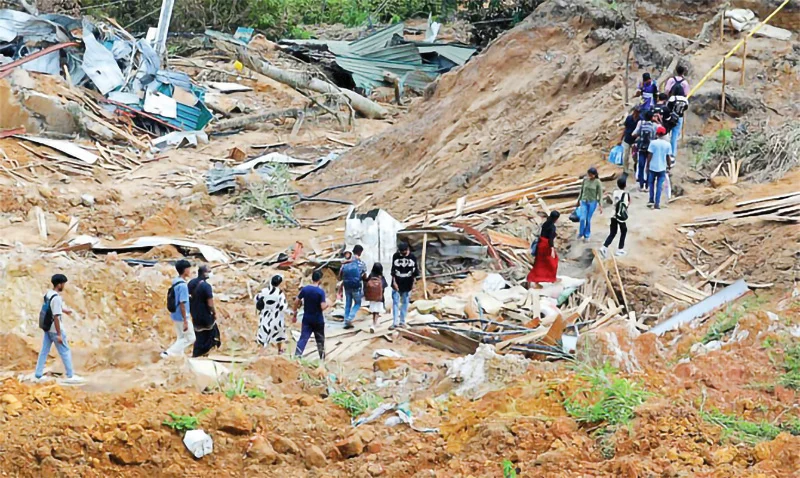
A landslide in Sri Lanka (AFP picture)
Ecological and Human Protection
Ecological consciousness demands
recognition that humanity is part of the Earth, not separate from it. Policies to address climate change must be grounded in this understanding, rather than in worldviews that prize infinite growth and technological dominance. Nature has primacy over human-created systems: the natural world does not depend on humanity, while humanity cannot survive without soil, water, air, sunlight, and the Earth’s essential life-support systems.
Although a climate victim today, Sri Lanka is also home to an ancient ecological civilization dating back to the arrival of the Buddhist monk Mahinda Thera in the 3rd century BCE. Upon meeting King Devanampiyatissa, who was out hunting in Mihintale, Mahinda Thera delivered one of the earliest recorded teachings on ecological interdependence and the duty of rulers to protect nature:
“O great King, the birds of the air and the beasts of the forest have as much right to live and move about in any part of this land as thou. The land belongs to the people and all living beings; thou art only its guardian.”
A stone inscription at Mihintale records that the king forbade the killing of animals and the destruction of trees. The Mihintale Wildlife Sanctuary is believed to be the world’s first.
Sri Lanka’s ancient dry-zone irrigation system—maintained over more than a millennium—stands as a marvel of sustainable development. Its network of interconnected reservoirs, canals, and sluices captured monsoon waters, irrigated fields, controlled floods, and even served as a defensive barrier. Floods occurred, but historical records show no disasters comparable in scale, severity, or frequency to those of today. Ancient rulers, including the legendary reservoir-builder King Parākramabāhu, and generations of rice farmers managed their environment with remarkable discipline and ecological wisdom.
The primacy of nature became especially evident when widespread power outages and the collapse of communication networks during Cyclone Ditwah forced people to rely on one another for survival. The disaster ignited spontaneous acts of compassion and solidarity across all communities—men and women, rich and poor, Buddhists, Christians, Muslims, and Hindus. Local and international efforts mobilized to rescue, shelter, feed, and emotionally support those affected. These actions demonstrated a profound human instinct for care and cooperation, often filling vacuums left by formal emergency systems.
Yet spontaneous solidarity alone is insufficient. Sri Lanka urgently needs policies on sustainable development, environmental protection, and climate resilience. These include strict, science-based regulation of construction; protection of forests and wetlands; proper maintenance of reservoirs; and climate-resilient infrastructure. Schools should teach environmental literacy that builds unity and solidarity, rather than controversial and divisive curriculum changes like the planned removal of history and introduction of contested modules on gender and sexuality.
If the IMF and international creditors—especially BlackRock, Sri Lanka’s largest sovereign bondholder, valued at USD 13 trillion—are genuinely concerned about the country’s suffering, could they not cancel at least some of Sri Lanka’s sovereign debt and support its rebuilding efforts? Addressing the climate emergency and the broader existential crisis facing Sri Lanka and the world ultimately requires an evolution in human consciousness guided by morality, compassion, generosity and wisdom. (Courtesy: IPS NEWS)
Dr Asoka Bandarage is the author of Colonialism in Sri Lanka: The Political Economy of the Kandyan Highlands, 1833-1886 (Mouton) Women, Population and Global Crisis: A Politico-Economic Analysis (Zed Books), The Separatist Conflict in Sri Lanka: Terrorism, Ethnicity, Political Economy, ( Routledge), Sustainability and Well-Being: The Middle Path to Environment, Society and the Economy (Palgrave MacMillan) Crisis in Sri Lanka and the World: Colonial and Neoliberal Origins, Ecological and Collective Alternatives (De Gruyter) and numerous other publications. She serves on the Advisory Boards of the Interfaith Moral Action on Climate and Critical Asian Studies.
Features
Cliff and Hank recreate golden era of ‘The Young Ones’

 Cliff Richard and Hank Marvin’s reunion concert at the Riverside Theatre in Perth, Australia, on 01 November, 2025, was a night to remember.
Cliff Richard and Hank Marvin’s reunion concert at the Riverside Theatre in Perth, Australia, on 01 November, 2025, was a night to remember.
The duo, who first performed together in the 1950s as part of The Shadows, brought the house down with their classic hits and effortless chemistry.
The concert, part of Cliff’s ‘Can’t Stop Me Now’ tour, featured iconic songs like ‘Summer Holiday’, ‘The Young Ones’, ‘Bachelor Boy’, ‘Living Doll’ and a powerful rendition of ‘Mistletoe and Wine.’
Cliff, 85, and Hank, with his signature red Fender Stratocaster, proved that their music and friendship are timeless.
According to reports, the moment the lights dimmed and the first chords of ‘Move It’ rang out, the crowd knew they were in for something extraordinary.
Backed by a full band, and surrounded by dazzling visuals, Cliff strode onto the stage in immaculate form – energetic and confident – and when Hank Marvin joined him mid-set, guitar in hand, the audience erupted in applause that shook the hall.
Together they launched into ‘The Young Ones’, their timeless 1961 hit which brought the crowd to its feet, with many in attendance moved to tears.
The audience was treated to a journey through time, with vintage film clips and state-of-the-art visuals adding to the nostalgic atmosphere.
Highlights of the evening included Cliff’s powerful vocals, Hank’s distinctive guitar riffs, and their playful banter on stage.
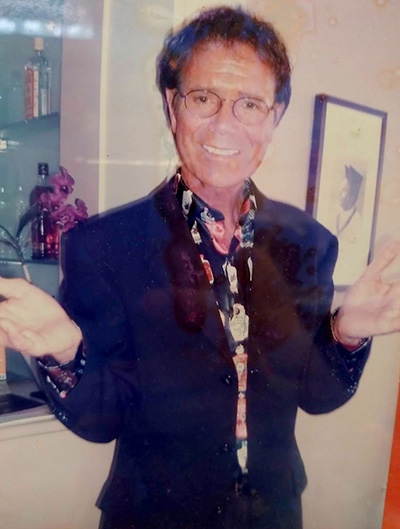
Cliff posing for The Island photographer … February,
2007
Cliff paused between songs to reflect on their shared journey saying:
“It’s been a lifetime of songs, memories, and friendship. Hank and I started this adventure when we were just boys — and look at us now, still up here making noise!”
As the final chords of ‘Congratulations’ filled the theatre, the crowd rose for a thunderous standing ovation that lasted several minutes.
Cliff waved, Hank gave a humble bow, and, together, they left the stage, arm-in-arm, to the refrain of “We’re the young ones — and we always will be.”
Reviews of the show were glowing, with fans and critics alike praising the duo’s energy, camaraderie, and enduring talent.
Overall, the Cliff Richard and Hank Marvin reunion concert was a truly special experience, celebrating the music and friendship that has captivated audiences for decades.
When Cliff Richard visited Sri Lanka, in February, 2007, I was invited to meet him, in his suite, at a hotel, in Colombo, and I presented him with my music page, which carried his story, and he was impressed.
In return, he personally autographed a souvenir for me … that was Cliff Richard, a truly wonderful human being.
-

 News3 days ago
News3 days agoOver 35,000 drug offenders nabbed in 36 days
-
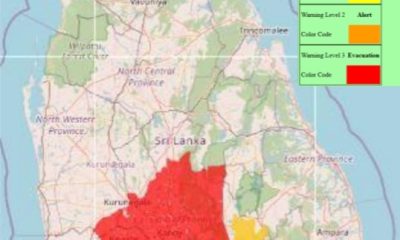
 News7 days ago
News7 days agoLevel III landslide early warning continue to be in force in the districts of Kandy, Kegalle, Kurunegala and Matale
-

 Business5 days ago
Business5 days agoLOLC Finance Factoring powers business growth
-

 News5 days ago
News5 days agoCPC delegation meets JVP for talks on disaster response
-
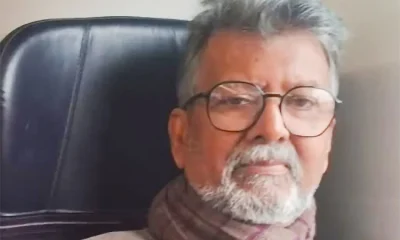
 News2 days ago
News2 days agoCyclone Ditwah leaves Sri Lanka’s biodiversity in ruins: Top scientist warns of unseen ecological disaster
-
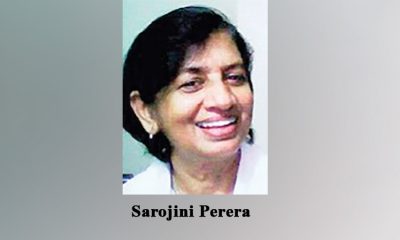
 News5 days ago
News5 days agoA 6th Year Accolade: The Eternal Opulence of My Fair Lady
-

 News3 days ago
News3 days agoRising water level in Malwathu Oya triggers alert in Thanthirimale
-
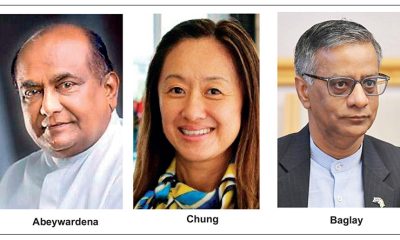
 Features1 day ago
Features1 day agoFinally, Mahinda Yapa sets the record straight













